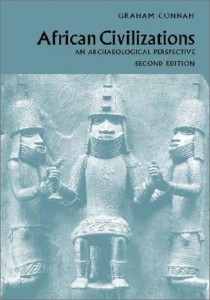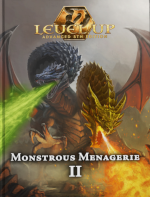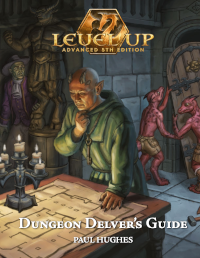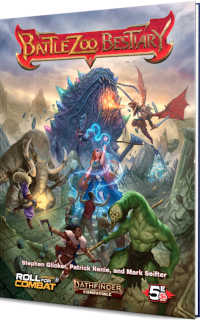We’ve pretty much gotten a complete RPG out of Mazes and Monsters, and now we’re putting together the final pieces. In a total reversal of normal RPG design, we’re putting together the combat rules last!
For reference, here’s Iglacia the Fighter’s character sheet:
Page 1:
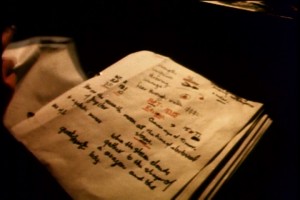
click for larger version
Page 2:
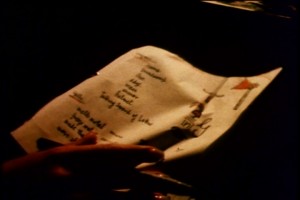
Combat System
For our combat rules, we need something baroque, something byzantine, something a little quirky.
Sure, we could just abstract combat, make it an instance of the general action resolution mechanic, the way modern, non-combat-oriented games do: but this is the 80s. This is a game called MAZES AND MONSTERS. It’s about fighting monsters and stealing their treasure (and working out your neuroses along the way). It needs detailed combat rules, preferably with charts.
We already know some details about the combat system. The Columbo-like detective said it featured “maiming”. We know that characters have Hit Points (dozens or hundreds of them). From the way that Tom Hanks stood between the muggers, we can guess it doesn’t feature flanking or tactical movement. And from the lethality of traps, I’d guess that combat in Mazes and Monsters can be a fairly deadly affair.
Combat rules can be reduced to four pieces: Hit Points, Damage rolls, Hit Rolls, and Defenses. We’ll take the first two today.
Hit Points
At level 9, Iglacia the Fighter has 181 HP. An awkward number: approximately 20 HP per level, but off by one. It seems that there is some random die rolling involved. And in Mazes and Monsters, if there’s die rolling, there are d12s.
We could use our exploding die rolls here, but it doesn’t seem reasonable that someone could roll a negative number for hit points. Imagine a first-level character who starts with -5 HP! I mean, this is the 80s, the decade of death during character creation, but let’s avoid that little headache and have HP rolls be regular d12 rolls.
The average roll of 3d12 is 19.5; if fighters roll 3d12 per level for HP, a 9th level fighter would average 175.5. Iglacia’s 181 is perfectly reasonable, especially considering that players’ HP scores trend high. There’s a long RPG tradition of cheating on your hit-point rolls.
D&D-like games usually have tiers of classes, toughness-wise: for instance, Basic D&D gives fighters d8s for Hit Points, clerics d6es and magic-users and rogues d4. Advanced D&D inflated things up to d10 for fighters, and then gave d12s to barbarians, but let’s not get ahead of ourselves. We’ll introduce power creep in later supplements. For now, let’s give tough classes, like Fighters, 3d12 HP per level; and weaker classes, like Holy Men and Frenetics, 2d12 HP.
What about monsters? I don’t know about you, but rolling 27d12 to generate the Hit Points of a 9th-level monster doesn’t sound very fun to me. Let’s give monsters static HP by level.
Monsters, to my mind, come in two tiers: melee monsters and ranged. Let’s give melee monsters 20 HP per level (similar to fighters in toughness) and ranged monsters 10 HP per level (a little less than Holy Men and Frenetics).
Damage Rolls
You can derive average damage from average HP by answering the following question: all things being equal, how many hits can a hero take? and dividing accordingly.
I get the sense that Mazes and Monsters is a deadly game. However, as our friends prove, it is possible to get to level 9, so the odds are stacked towards the smart player!
My guess – based on the same instinct that led me to peg spell points at 20 per level and spells at 10 spell points per level – is that, on average, a fighter can take maybe two solid hits: but I wouldn’t be surprised if a monster can one-shot a player with a good enough damage roll.
Let’s start with two types of attacks, Weak attacks and Strong attacks.
Weak attacks – like a sprite’s dagger, or an ogre’s sling – do exploding 1d12 damage times the attacker’s level. (It’s a great way to learn your times table!)
Average damage for a weak attack is 5.5 HP per level, while fighters have an average of around 20 HP per level. On average, Iglacia the fighter can take 4 Weak hits from 9th-level adversaries before being killed.
Strong attacks – like a sprite’s bow, or an ogre’s club – do exploding 2d12 damage times the attacker’s level.
Two Strong attacks from a 9th level opponent will kill Iglacia. One such attack has almost a 50% chance of dropping Pardieux. He’d better only resort to front-line fighting as a last resort! He’d better rely on his spells, or on reason.
Next week, let’s figure out hit rolls, armor, weapons, and all that jazz. Then we’ll have a complete combat system.

